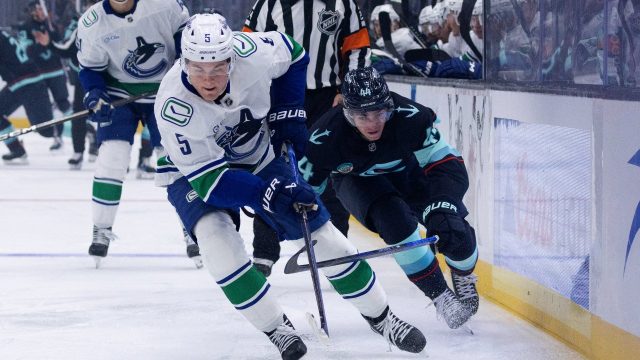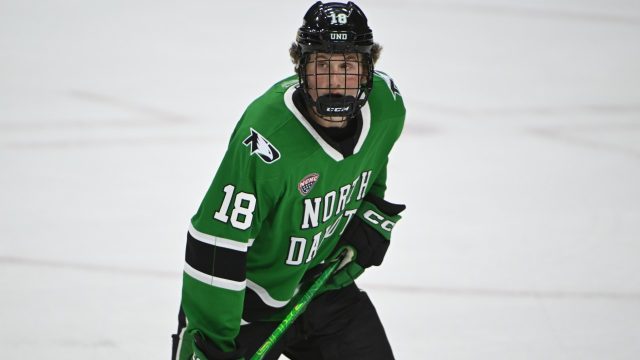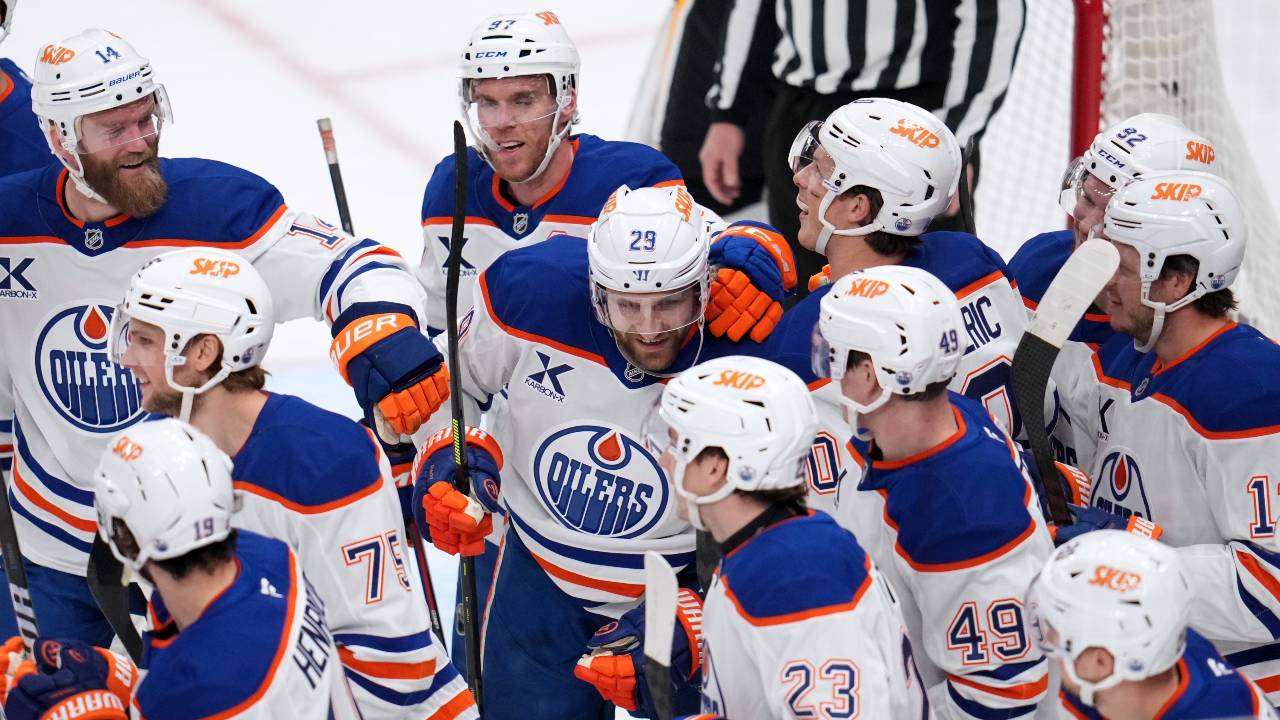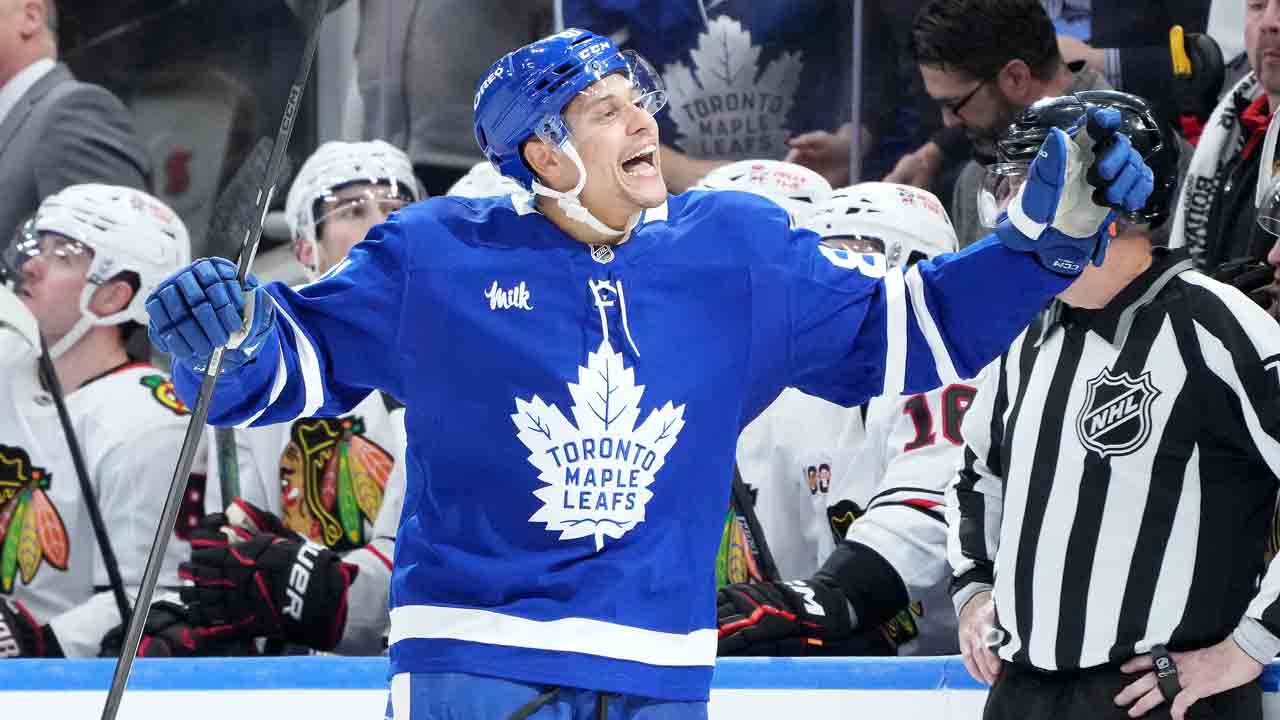
Every fall there are NHL prospects who were chosen in the two most recent drafts, are 19 years old or younger, and have at least one more year of major junior eligibility (CHL) who are given a nine-game opportunity to prove themselves at the NHL level before their pro team faces its first threshold on whether or not to send that player back to junior.
Currently, none of these players are eligible to be sent to the AHL to develop (outside of a short conditioning stint), though when the new CBA kicks in this summer, each NHL team will be allowed to send one of these junior-eligible prospects to the AHL instead of the CHL.
When these types of prospects play their 10th NHL game, it officially burns the first year of their three-year entry-level contract. The NHL team can send them back to junior later on anyway, but when that player returns next training camp they will be entering the second year of their ELC. Some of these rookies have already played 10 or more games, while others have experienced a healthy scratch or two and haven’t played that many yet.
However, I don’t believe the 10-game audition for prospects concerns NHL teams now as much as it did in the past.
If a prospect looks comfortable in the NHL, teams aren’t worried about burning a year off their ELC. The more important contractual threshold comes later. Once a player has been “rostered” for 40 games — whether he plays in all of those games or not — he gets rewarded for time served and becomes one year closer to being eligible for arbitration and unrestricted free agency. Players become UFA eligible after being credited for seven NHL seasons, so teams are much more concerned with a high-end prospect getting one year closer to that status than to just burning off a year of their ELC.
With all of this in mind here’s an update on some of the top prospects currently playing in the NHL who would have to be returned to their junior clubs this season if their team let them go, and what their projected status is moving forward:
Matthew Schaefer, D, New York Islanders
Despite the fact he only turned 18 on September 5, the first-overall pick from the most recent draft in Los Angeles has by far been the Islanders’ top defenceman so far and arguably their best player overall.
Schaefer has played 12 games, produced 5G-5A, and averaged 22 minutes per game in ice time while being deployed in all situations. His name is already coming up in Team Canada discussions for the Olympics this February. Schaefer is a Calder Trophy candidate for top rookie in the league and is already a star in the making. His OHL career with the Erie Otters is in the rearview mirror. There’s zero chance he’ll be returned to junior hockey.
Beckett Sennecke, F, Anaheim Ducks
Sennecke has played in all 11 games for the Ducks so far this season. The third-overall pick from the 2024 draft is plenty strong for the NHL game (listed at 6-foot-3, 206 pounds) and contributing offensively in Anaheim (4G-3A).
I worked with Ducks head coach Joel Quenneville during my time with the Florida Panthers. He’s the right coach at the right time for the evolving Ducks team. Sennecke won’t be given anything for free, he will have to improve some of his off-puck habits and make sure he is tracking up and down the ice on time, but Quenneville will reward him for hard work.
Sennecke is averaging over 17 minutes per game with all of his shifts coming at even strength and on the power play. He’s earned the right to call Orange County home and is well on his way to a productive rookie season in Anaheim.
-
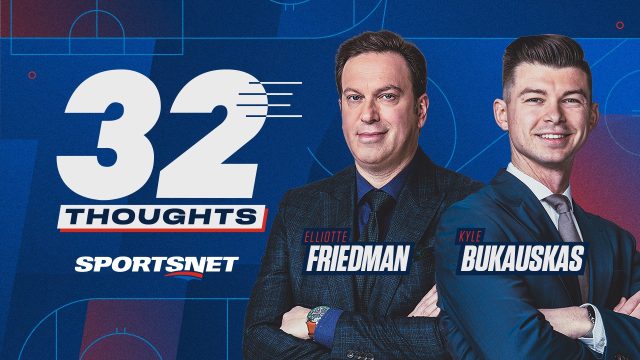
-
32 Thoughts: The Podcast
Hockey fans already know the name, but this is not the blog. From Sportsnet, 32 Thoughts: The Podcast with NHL Insider Elliotte Friedman and Kyle Bukauskas is a weekly deep dive into the biggest news and interviews from the hockey world.
WORLD JUNIOR CONSIDERATION?
I don’t believe the next set of prospects are likely to return to major junior this season, but I do see the possibility that some of them end up on Team Canada’s WJC roster this Christmas. Unlike Schaefer and Sennecke, these players have less of a role with their respective NHL teams and could benefit from the high leverage games and increased roles at the world junior tournament.
However, I’d expect all of them to return to the NHL after the event, unless their play drops off considerably before then.
Note: Releasing prospects to the world juniors takes them off their NHL team rosters, so the 40-game clock pauses while they are away from the club and would resume upon their return from the tournament.
Ben Kindel, F, Pittsburgh Penguins
Kindel has been a nice story to start the season and fits well into the strategy the Penguins are attempting to employ for the future. The team is off to a fantastic start, 8-4-2 through its first 14 games, but are likely playing with house money to start the year. The Pens are in the midst of a retool/rebuild that will take time and Kindel is a key piece of the equation.
Kindel has dressed for 12 games so far this season and averaged 14 minutes of ice time. Like Sennecke, all of his shifts have come at even strength and on the power play. Early on, he’s proving he can be a threat offensively by potting five goals and is coming off a game that saw him play a season-high 22:23 versus the Toronto Maple Leafs.
I’m monitoring Kindel’s role going forward, but I believe he has earned the right to develop in Pittsburgh this year and will benefit from learning how to be a good pro by watching how Sidney Crosby practices and prepares for games.
Having said that, I’m positive Team Canada’s WJC team will be circling around Kindel, hoping he is released for the tournament. The experience definitely wouldn’t hurt his development, but the decision to have him around the leadership group in Pittsburgh instead makes it a tough call at this stage.
Berkly Catton, F, Seattle Kraken
Catton was selected eighth overall by the Kraken in 2024 and has nothing left to prove at the junior level. He’s an elite offensive talent who produced 92G-133A over the last two regular seasons playing for the Spokane Chiefs in the WHL and contributed 11G-31A in 20 playoff games last spring.
Catton has skated on the top line with the Kraken for stretches this season, but was recently demoted in the lineup and clocked in for only 7:07 in Seattle’s game versus the Chicago Blackhawks. He has three assists in seven games played overall.
Depending on how Catton’s role evolves with the Kraken in his next 10-game segment I could see him ending up on Team Canada’s roster for the WJC and returning to the Kraken following the tournament. He’s too good for the WHL, but is still evolving at the NHL level and needs some time. But being around the pro game is where he belongs.
Zayne Parekh, D, Calgary Flames
The Calgary Flames have a plan for Parekh and it doesn’t include a return to junior hockey with Saginaw in the OHL.
The Flames drafted Parekh one slot behind Catton (ninth overall) at the 2024 draft. He’s an offensive dynamo who put up Bobby Orr-like numbers in the OHL. Parekh scored 97G-172A over the last three seasons with the Spirit. He has nothing to prove at the junior level, but he’s also struggled at times to handle the weight and detail of the NHL game on the defensive side of the ledger.
Parekh has been in and out of the Flames lineup and averaged 15:35 in ice time when he does play. Through 10 games he has posted one assist while being deployed at even strength and on the power play.
It would be interesting if Parekh were loaned to Team Canada for the WJC because he wasn’t part of the team last December and it left a bad taste in his mouth at the time. Calgary would have to be comfortable with whatever Canada’s management group had planned for Parekh if they were to release him, otherwise they might decide to hold him back and keep developing him under their watch.
I would like to see Parekh competing at the world juniors in high leverage scenarios, but there’s a lot to unpack with his scenario.
Sam Dickinson, D, San Jose Sharks
The Sharks are a team on the rise and flush with exciting, dynamic, young prospects on their NHL roster. In an interesting twist of fate and timing the Sharks have two budding stars who both have CHL eligibility remaining on their development clock in Dickinson and forward Michael Misa.
Dickinson was drafted 11th overall by the Sharks in 2024. The 6-foot-3, 205-pound, left-shot defenceman has already benefited from a ton of high-leverage experience playing for the London Knights in the OHL. The Knights are serial winners at the junior level and coming off a Memorial Cup championship last June. Dickinson was deployed for over 30 minutes per game a lot of nights playing in London and used in all situations. He produced 29G-62A and finished a ridiculous plus-64 in the regular season last year and followed it up with 9G-22A and a plus-22 rating in the playoffs.
The Sharks have recently been dressing 11 forwards and seven defenders for their games. Dickinson is slowly being integrated, has played 10 games so far, and has been getting between 11 and 17 minutes per game in ice time. He hasn’t looked out of place overall, but needs time to continue to work on the consistent details that come with being an NHL defenceman with offensive upside.
Dickinson scored his first NHL goal in his last game versus the Detroit Red Wings. Like Parekh, he has nothing left to prove at the junior level, but since the Sharks are deploying seven defencemen he could be a candidate for Team Canada’s WJC team as well.
Michael Misa, F, San Jose Sharks
The Sharks drafted Misa second overall this past June. He’s a highly decorated junior player who led the CHL in scoring last season (62G-72A). Misa was granted “exceptional status” by the OHL in 2022, so he’s already played four years in the OHL.
Misa has nothing to prove at the junior level either, but he’s having a more difficult time finding a consistent role in the Sharks lineup. He’s dressed for seven of their 13 games so far this season and contributed 1G-2A while averaging under 12 minutes of ice time per game. Misa does see time on the power play when he’s in the lineup, but with the Sharks electing to dress seven defencemen instead of 12 forwards he has found himself in either a depth role at even strength or a healthy scratch.
I could see Misa landing on Team Canada’s roster. He will benefit from the experience and should add the offensive punch the team was missing last Christmas at the tournament in Ottawa.
MAY RETURN TO MAJOR JUNIOR
The last of these types of prospects on my radar is one who I can see being returned to junior hockey following a potential role at the world juniors:
Harrison Brunicke, D, Pittsburgh Penguins
The Penguins selected Brunicke in the second round (44th overall) in 2024. The 6-foot-3, 203-pound, right-shot defenceman has appeared in nine of Pittsburgh’s 14 games so far this season, but his average ice time has been declining and reached a season-low 12:39 Monday in Toronto.
Brunicke is a solid prospect and projects as a two-way defender who will chip in with some secondary offence on occasion. After a very strong training camp and generally reliable start to the season he has struggled recently and posted a minus-6 rating in his past three games. Brunicke appears to need more time to develop and adjust to the speed and skill of the NHL. I see him as an invite to Canada’s junior training camp, but wouldn’t be surprised if he was returned to the WHL’s Kamloops Blazers in the coming days.


